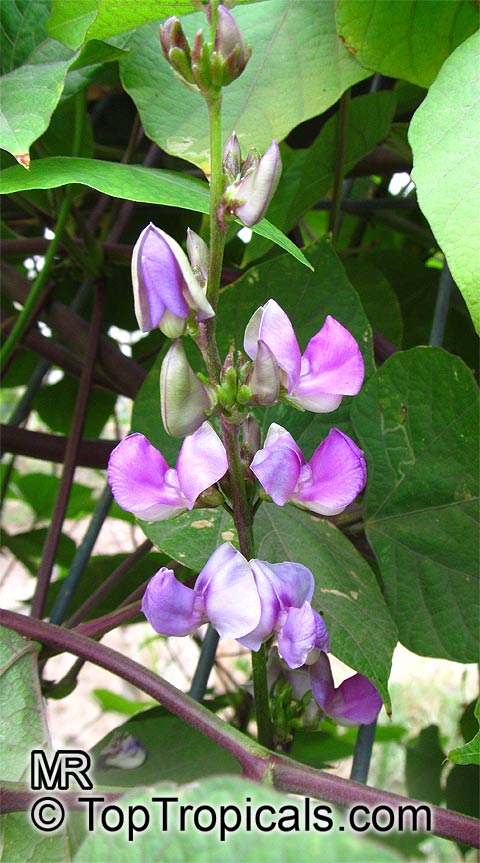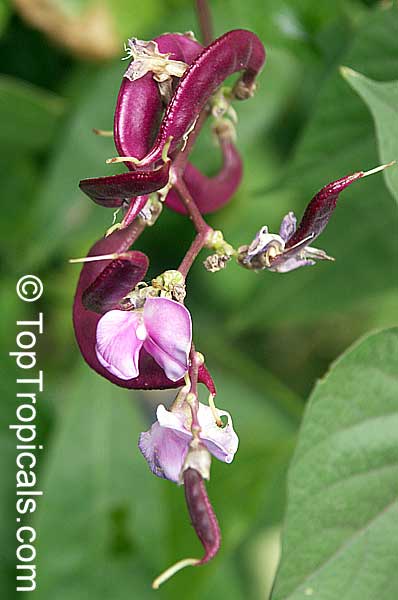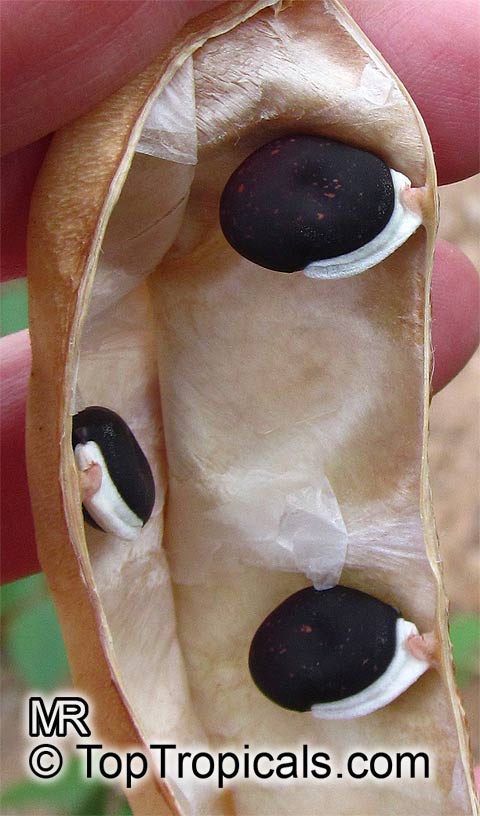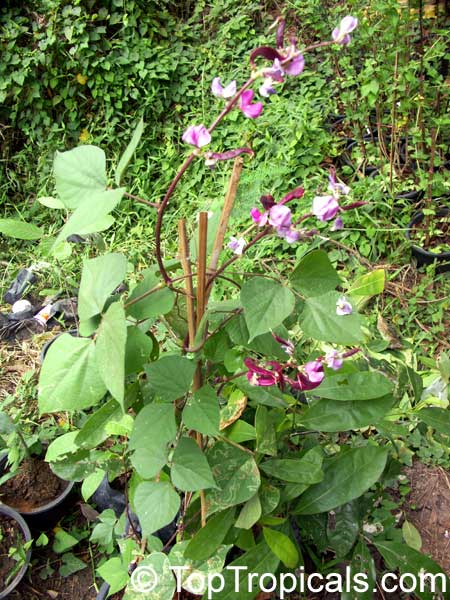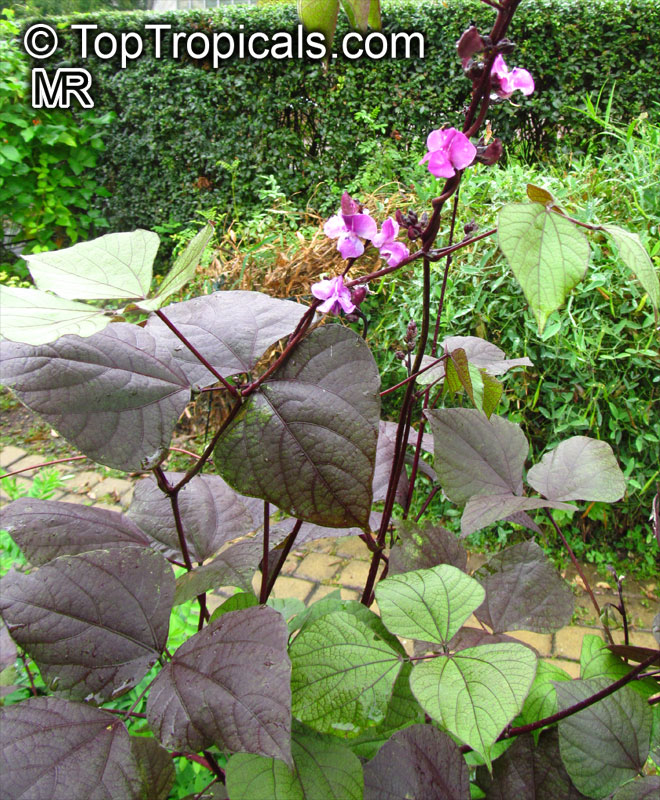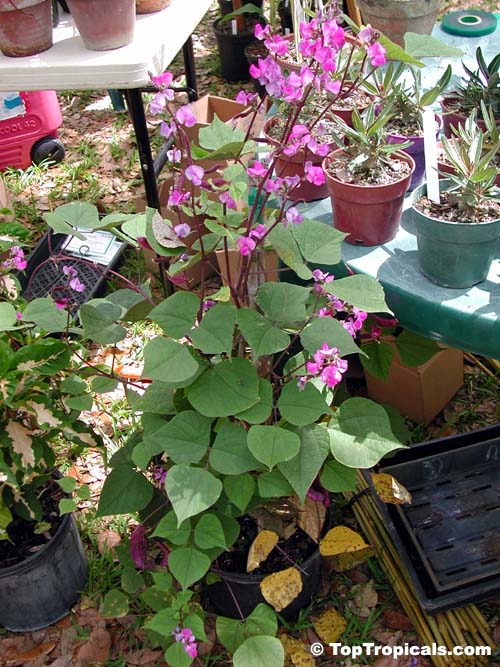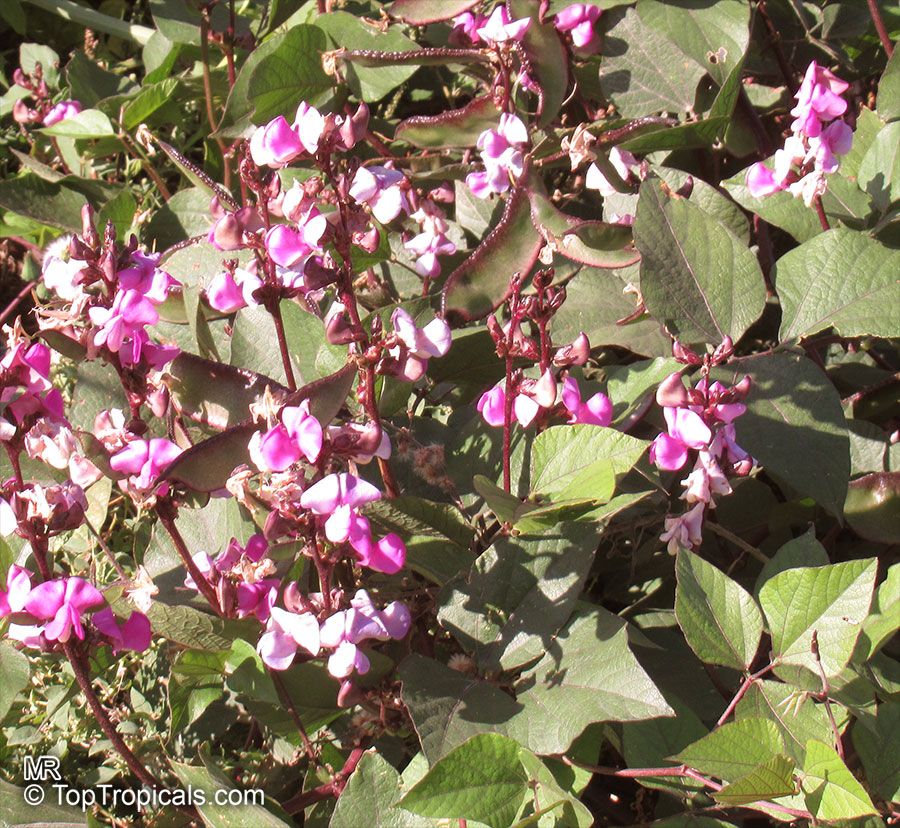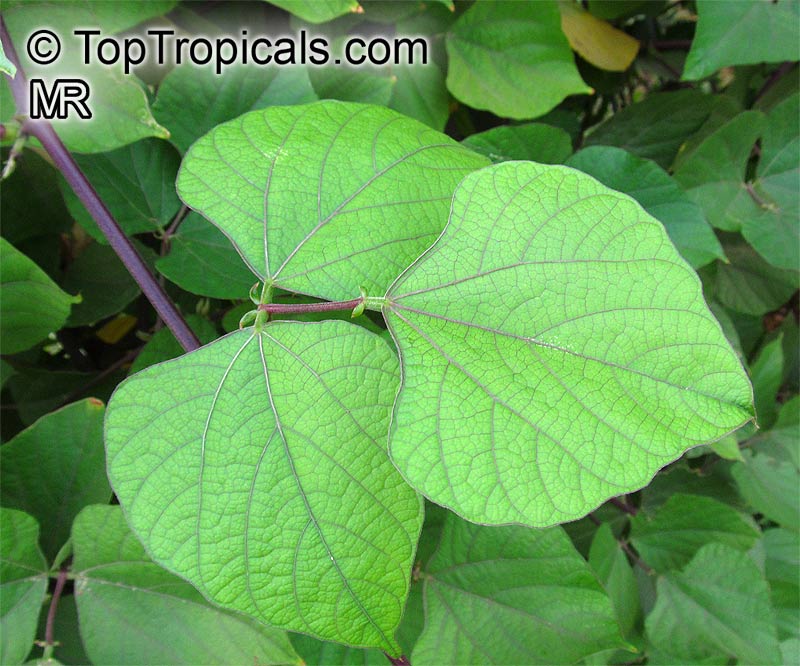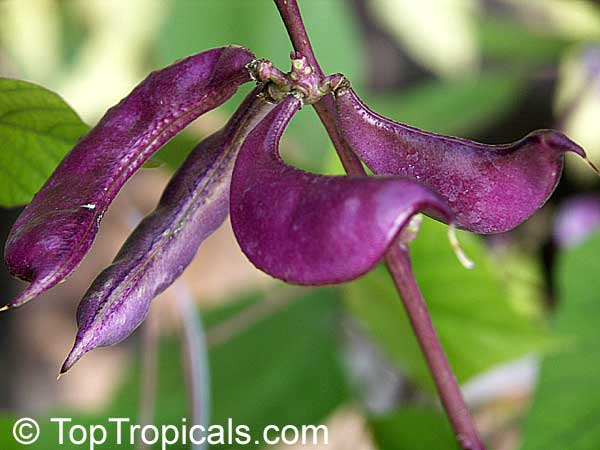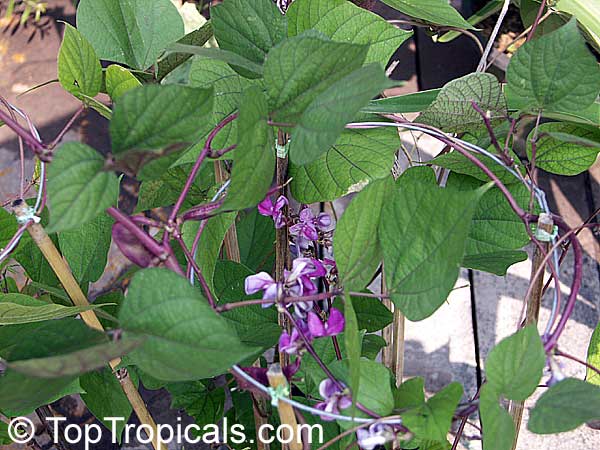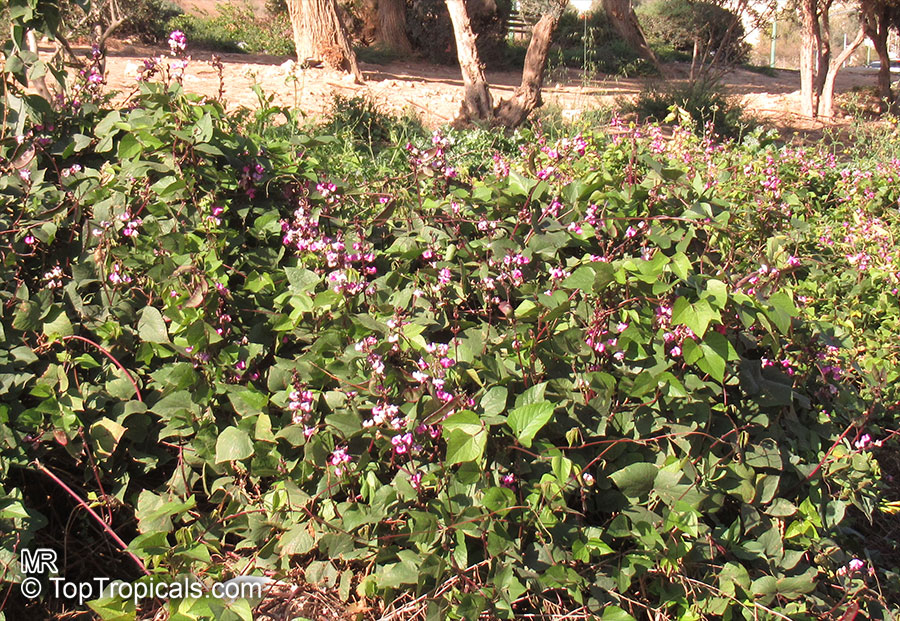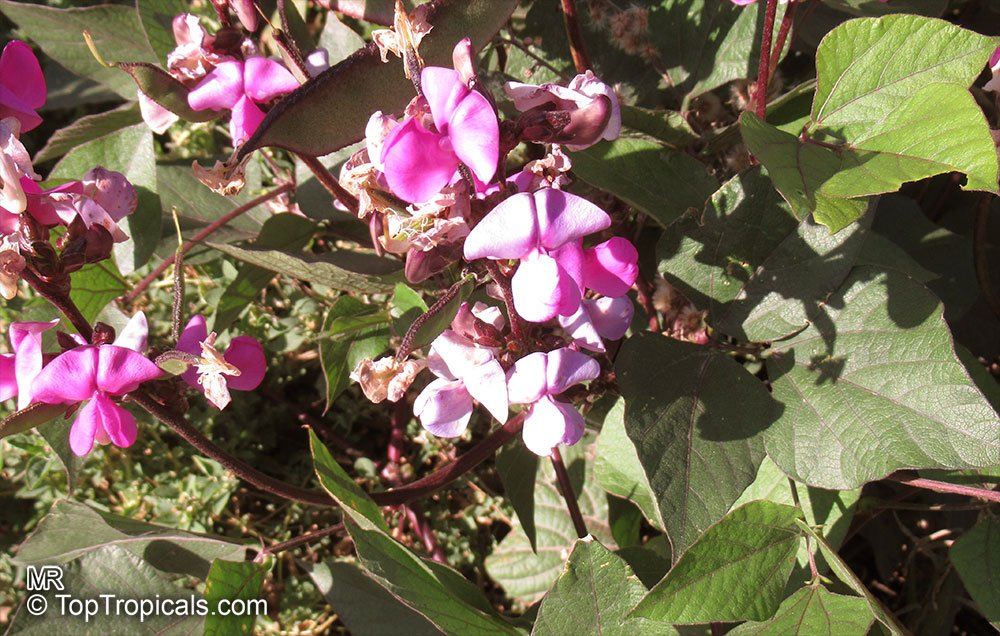Lablab purpureus (Hyacinth bean)
Top Tropicals Plant Encyclopedia
Botanical names: Lablab purpureus, Dolichos lablab
Common name: Hyacinth bean
Family: Fabaceae
Subfamily: Faboideae
Origin: Madagascar









Flowers of Lablab purpureus range from pink, blue, lavender, or purple in color. It attracts butterflies, hummingbirds, and other beneficial insects. It should be grown in full sun or semi-shade and needs regular water. Thereafter good culture is important. It needs nitrogen fertilization to thrive. The plant's pods will reach 6-9 inches in length when fully matured. Usually its seeds are black, brown or tan in color when matured.
Lablab purpureus, or Hyacinth bean, is a twining vine that is native to Madagascar and is widely grown in Southern Asia and Africa. The plant is similar to the Southern pea, however the vines are longer and tougher, with the potential to grow 20-25 feet long when supported. The leaves are broad, oval, and pointed, while the flowers vary from pink, blue, lavender, or purple. It attracts butterflies, hummingbirds, and other beneficial insects to the garden, making it both a practical and attractive choice.
Grown in USDA Zone 9-11, Hyacinth bean needs full sun or semi-shade, as well as regular water and nitrogen-rich fertilization to thrive. The pods of the plant are 6-9 inches in length when mature, usually with black, brown, or tan seeds. The ripe seeds and immature green pods of the plant are edible when thoroughly boiled, however it is toxic when consumed in large quantities.
Not only is Hyacinth bean a beautiful, hardy vine, but its ripe seeds and immature green pods are also part of many healthy diets. The pods have a high fiber content, while the seeds are a good source of protein, calcium, and iron. It also contains potassium, phosphorus, thiamin, and niacin. Each pod can bear up to three to six seeds, making this plant capable of producing a good amount of food with proper care in the garden. In regions with colder climates, the plant can still thrive in pots, especially when provided with the right amount of sunlight, water and nutrition.
